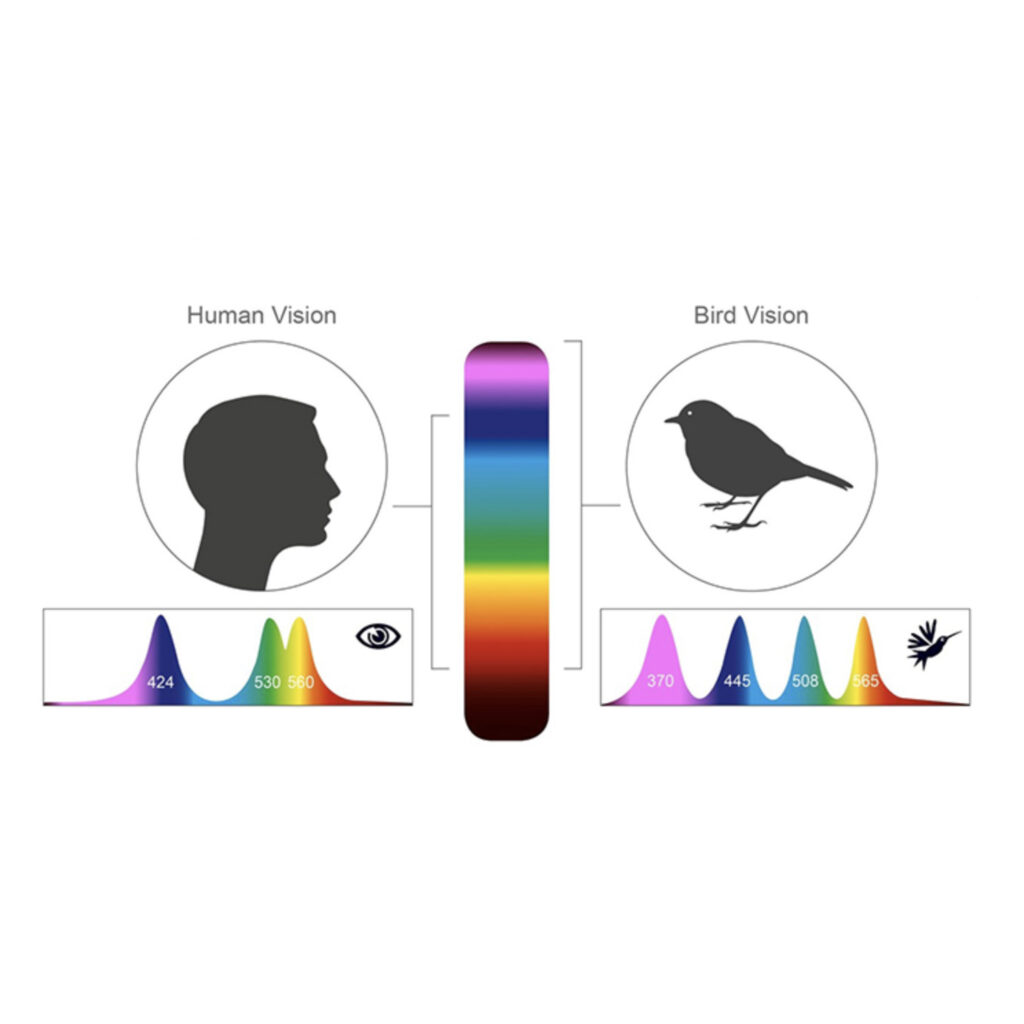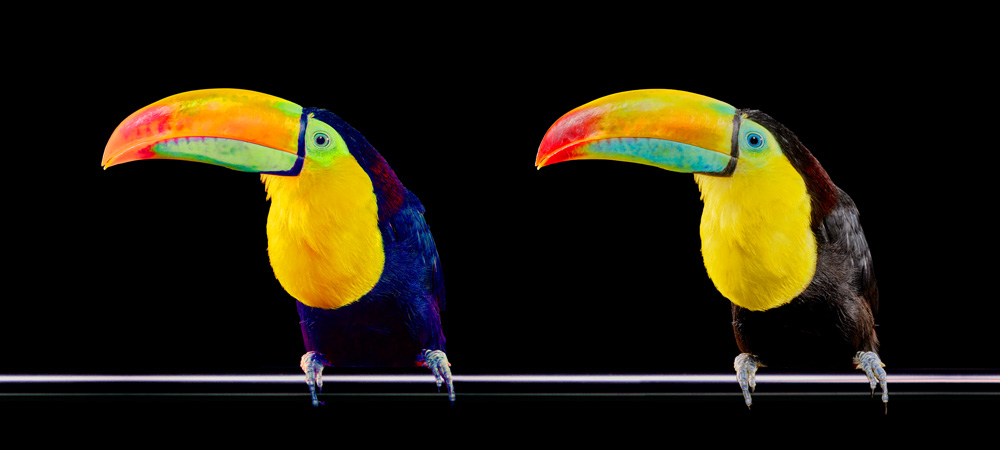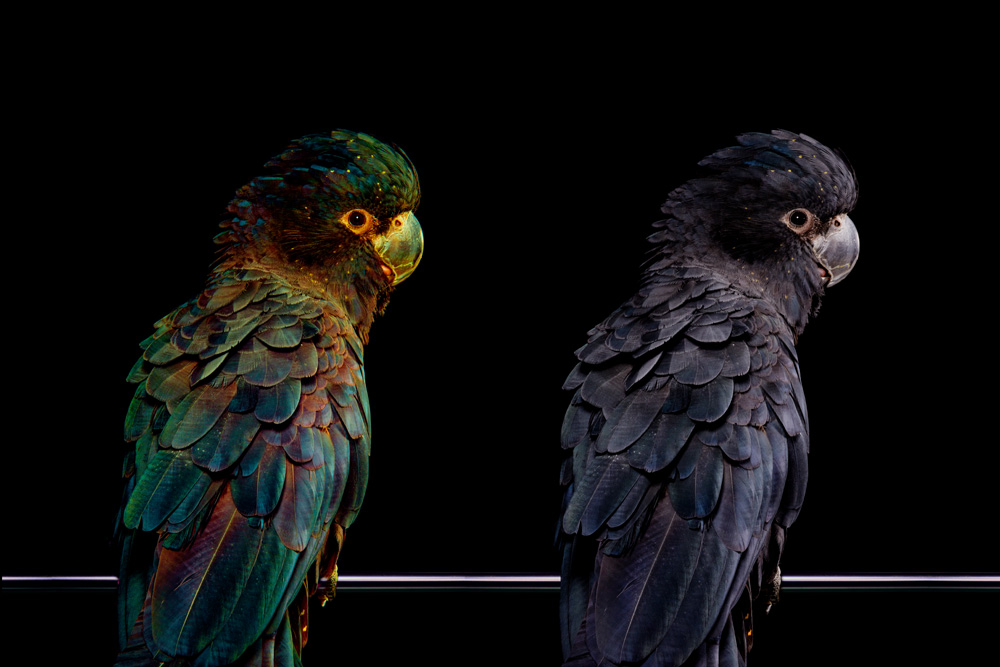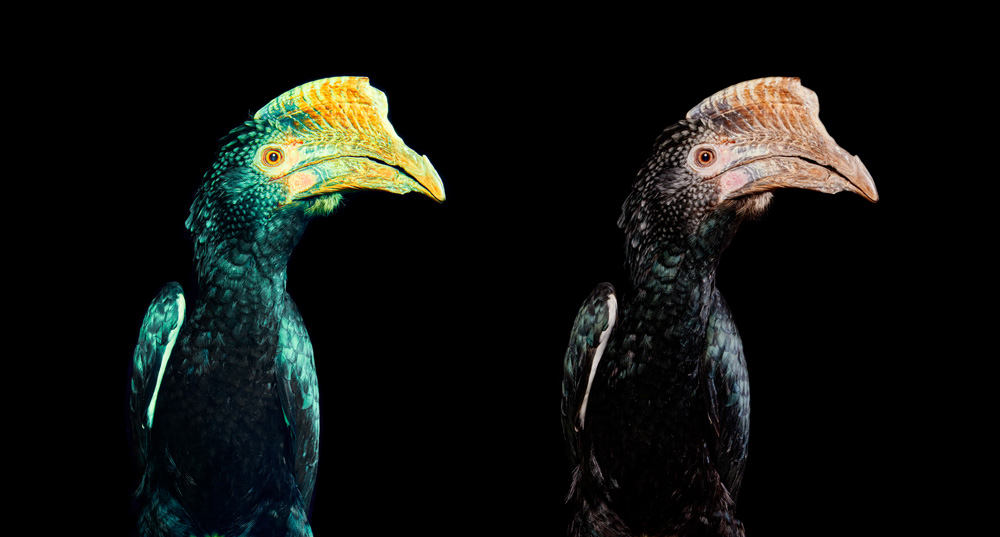
Birds see a wider spectrum of light than humans can , Birds can see UV light, because their lenses and other ocular media transmit UV light. They have special photoreceptors that vary by species and are sensitive to deep violet and UV light.
How do birds detect ultraviolet (UV) light? The human retina has three kinds of cone cells (receptors used for color vision): red, green and blue. By contrast, birds have four kinds, including one that’s specifically sensitive to UV wavelengths. There’s also another difference: In birds, each cone cell contains a tiny drop of colored oil that human cells lack. The oil drop functions much like a filter on a camera lens. The result is that birds not only see UV light, they are much better than humans at detecting differences between two similar colors.
We have worked out how to photograph live moving squawking animals with our “Bridvision” set up. We are shooting with two cameras at the same instant so we have matching / overlaying files. One camera see the spectrum a bird sees the other the human vision
Keel-billed toucans have zygodactyl feet (or feet with toes 2 and 3 facing forwards, and toes 1 and 4 facing backwards) – two toes face forward and two face back. Because toucans spend a large portion of time in the trees, this helps the birds to stay on the branches of the trees and jump from one branch to another.
Thanks so much to @ravengalleryto for the space to work in keeping and and Hands-on exotics for great models


